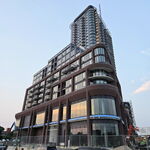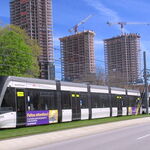steveintoronto
Superstar
Here's the present state of Nippon-Sharyo:
Well here's Metrolinx' big chance! They're down to a skeleton crew, something like 17 people from a story I read earlier today. Since the order that was taking up all the labour and space has crashed, they can perhaps produce the DMUs again.
Except that they have had no interest since the SMART order that ML piggybacked on.
As to digging out info prior quoted in this string, perhaps you folks would care to go first? Let me make this simple: Who has expressed interest in the Nippon-Sharyo DMUs?
As much as N-S claims to want to stay operating, the present value is greater in selling the operation, thus the sudden increase in stock prices.
Looks like Stadler won the game after-all:
So now Stadler ostensibly have an FRA waiver in hand (the fix must be in to build their plant) who's going to buy the Nippon-Sharyo? SMART? They've stated they regret buying N-S.
Metrolinx?
Seems Nippon-Sharyo have had quite a few "teething problems" of late...
http://northernpublicradio.org/post/rochelle-rail-car-facility-loses-big-contractRochelle Rail Car Facility Loses A Big Contract
By Guy Stephens • Nov 10, 2017
[...]
But the company ran into difficulties with the design of the cars, and the roll-out was halted while it tried to work them out. Nippon Sharyo blamed the issue for its layoff this year of more than 200 workers at the Rochelle plant.
Wednesday, Caltrans announced that the two states and Sumitomo had reached an amended agreement. The cars -- now a single-level design -- all will be built at a Siemens plant in California. Caltrans cited the problems experienced by Nippon Sharyo, and the resulting delays, in its news release.
In a statement to WNIJ, Nippon Sharyo acknowledged the loss of the contract and its problems, but said, “The company will continue its business operations going forward with a reduced number of employees to meet the needs of existing customers and contractual responsibilities.”
[...]
Well here's Metrolinx' big chance! They're down to a skeleton crew, something like 17 people from a story I read earlier today. Since the order that was taking up all the labour and space has crashed, they can perhaps produce the DMUs again.
Except that they have had no interest since the SMART order that ML piggybacked on.
As to digging out info prior quoted in this string, perhaps you folks would care to go first? Let me make this simple: Who has expressed interest in the Nippon-Sharyo DMUs?
As much as N-S claims to want to stay operating, the present value is greater in selling the operation, thus the sudden increase in stock prices.
Looks like Stadler won the game after-all:
https://sf.streetsblog.org/2009/07/16/smart-to-use-heavier-rail-cars/SMART to Use Heavier Rail Cars
The SMART board decided against using light European-made cars like these Stadler GTW DMUs. Flickr photo: Daniel Sparing
The Sonoma Marin Area Rail Transit (SMART) Board, in a 9-2 vote, has elected to use heavier, American-made rail cars instead of lighter, quieter, low-floored, European-made models that some of the directors originally favored.
A report on the various options, presented by SMART staff to the board Wednesday, noted that while the light cars "offer more operational efficiencies in comparison to an FRA-compliant design on a per vehicle basis," they would be much more difficult to purchase and implement, since the SMART’s planned rail service "lies within a perfect storm of American rail service regulators."
For one, the light cars are not Federal Railroad Administration (FRA) compliant, and thus SMART would need to negotiate temporal separation from any freight service, which will soon begin operating again in the North Bay for the first time since 2001. Since the light cars would be produced abroad, they also would require a waiver of the Federal Transit Administration’s Buy America clause. [...]
So now Stadler ostensibly have an FRA waiver in hand (the fix must be in to build their plant) who's going to buy the Nippon-Sharyo? SMART? They've stated they regret buying N-S.
Metrolinx?
Really? All three car sets as promised by the end of this year? I live right next to the tracks and take the UPX every other day. Where's the missing rolling stock? Some trains are three car, most aren't.There's been some teething problems, but they are in service every day.
Seems Nippon-Sharyo have had quite a few "teething problems" of late...
Last edited:





